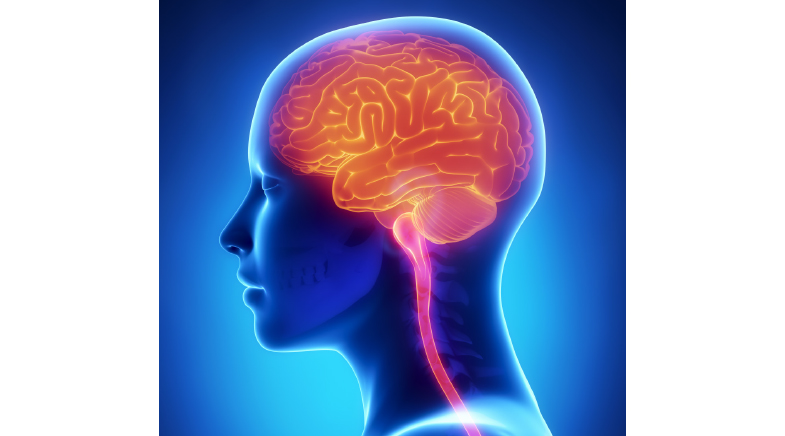How the brain works
-
- from Shaastra :: vol 03 issue 11 :: Dec 2024 - Jan 2025

Understanding how we have such extraordinary cognitive capabilities seems impossible, but studying the brains of other animals helps.
Sitting in a moving train, watching the outside roll by, we see buildings, trees and traffic. But soon, our mind wanders. We see a passenger who looks like an aunt. We think of her, then of the time we spent with her. Then we remember not contacting her children in a long time. We then jump to the many pending chores we have. Then, we escape to our phone to message home about our arrival, read about the world and then wonder what on earth are gravitational waves. Perhaps sitting on our shoulders all this time is a spider and scampering undetected below is a little mouse. Ed Yong starts his book, An Immense World, by describing a similar but much more diverse menagerie in a barn.
He points out the relatively narrow window of highly specialised sensory information that each animal can receive and use to act. Owls can detect a moving mouse in the dark, dogs have an extraordinary sense of smell, and snakes are sensitive detectors of vibration and temperature changes pointing to nearby prey. But do their minds wander off the way ours do, or, as Daniel Dennett asks in his book, From Bacteria to Bach and Back, is this a human quirk — a product of our vast and complex brains — denied to other organisms? We 'know' somewhat what it is to be human and can ask each other about this. But how does our ability for abstraction, creativity, self-awareness, and knowledge of our inevitable death, all come about? Can we ever understand how our brain gives rise to the wandering mind, or is that a self-referencing futile quest? On a more mundane level, can we even understand how the ‘mind’ of an insect works — do they even have a mind — and how their brains work to enable whatever cognitive abilities they have?
Research in cognition and consciousness has become mainstream, although formidable challenges remain. On one side, a tribe of neuro-philosophers — experts in both neuroscience and philosophy — has arisen. They study memory, recall, and the power of abstraction in normal and damaged brains and try to conclude how 'higher' functions come about. But there is only so much understanding that can come from the study of behaviour in damaged brains — an approach that has been most movingly described in the many books by Oliver Sachs.
A monthly column that explores themes on nature, nurture and neighbourhood in the shaping of form and function.
Research comparing brain, behaviour and cognition among animals has advanced remarkably. Neuroscience has opened new frontiers that allow us to ask how much of what we thought were attributes unique to humans also apply to other organisms and how neural circuits in the brain function to give rise to these attributes. Charles Darwin, most famous for proposing the Theory of Evolution by Natural Selection, wrote a sequel, The Expression of the Emotions in Man and Animals, published in 1872. In this profound and readable work, Darwin argues that many expressions and emotions seen and understood in humans appear to have similarities in other (large) animals, such as other primates, dogs and cats. More recently, with modern neuroscience, which links brain function to behaviour, we can deduce which expressions have a similar basis and others that are merely superficially identical. Comparative studies of animals other than us, such as flies, octopuses, and non-human primates, have begun to play a crucial role in exploring a new frontier. Such animals, which have smaller brains than humans or have a different or narrow behavioural repertoire, are invaluable in teaching us about the brain's relationship to the mind and how complex cognitive abilities came about during evolution.

Separately, as our currently limited understanding of how artificial intelligence works changes, machines will also inform us about how our brain works and give clues to how humans' capacity for consciousness comes about. Understanding how brains allow consciousness to emerge may provide answers about whether and when machines can have a mind. Research in brain and cognitive science is among the most exciting and rewarding areas.
NEURAL NETWORKS
To understand how the properties of the mind arise from the brain, it helps us to know what we mean by the brain and the mind. In common parlance, the brain is the physical organ beneath our skull. Sensory inputs to the brain arise when we taste, smell, see, hear, touch or feel pain. Responses to these sensations occur in nerve cells or neurons connected to sense organs. The 'firing' — or the electrical activity — of these neurons triggers the release of chemicals called neurotransmitters at junctions, or synapses, of other neurons, causing their excitation or inhibition. A gentle touch, a whiff of odour, a brief light pulse, or indeed all of these together, can trigger networks of neurons in multiple brain layers. These neural networks come about through the 'wiring' of neurons into circuits, loosely analogous to electrical circuits. The networks of neurons in the brain are organised in layers and regions. Layers receive signals from other layers or regions of the brain and similarly send out signals. Each layer gets signals from the layers it signals, and these 'recursive' feedback and feed-forward signals can be detected and followed and linked to behaviour.
We 'know' somewhat what it is to be human but how does our ability for abstraction, creativity, self-awareness and knowledge of our inevitable death, all come about?
While many of these inferences come from decades of work in mice, zebrafish, roundworms and fruit flies, recent results on the fruit fly (Drosophila melanogaster) brain have completely revolutionised brain research. To understand why, we first need to know the extraordinary range of behaviours flies are capable of. They remember, evade your swatter expertly, and fly great distances to find their mates. They can be aggressive and social, feel sated, and sleep. Because we can track every behaviour of this laboratory fly, we have an opportunity to link the brain to the 'mind' of the fly. Making this link recently took a great leap forward when Mala Murthy and her colleagues from Princeton, collaborating with over a hundred scientists and citizen scientists, solved the entire connectome of the fruit fly brain (bit.ly/princeton-fly). They showed how 130,000 nerve cells or neurons, which have millions of connections between them, are 'wired' in a female fly. In doing this, they identified 8,000 different types of nerve cells. This detailed wiring diagram is not just a plumbing map of neuronal connectivity. Over decades, hundreds of scientists have developed tools that can activate or shut down nerve cells and look at the effect on behaviour. With the connectome, this can be done at the level of a single cell, and we can ask how its activity affects a specific behaviour in the fly.
One significant finding, even at these early stages, is that the dynamics of the whole brain is generated by a collection of tiny circuits that operate independently of each other but 'sense' each other. The question naturally arises: is this conclusion generalisable to larger brains such as ours? Unlike the fly, which has 130,000 neurons, humans have about 86 billion neurons and trillions of connections. While the fly can do many things we cannot in its very narrow world, we can do a lot with our brain that no other animal does.
What we see as the brain's output is the movement of the human, a scream, laughter or tears, depending on the nature and the extent of the stimuli and how the brain interprets these in the context of experience. But our lives, and those of other animals, are not just about sensing the world and responding. We humans have memories of long-past events; we can imagine a future that we cannot predict or an entirely imaginary world. A dog sitting in a moving train does not seem likely to wander off thinking about its aunt or gravitational waves. It will be a long while before we have a 'bottom-up' view of the workings of the human brain like we have for the fly. But 'top-down' opinions of how the mind emerges from the brain are there in plenty.
THE CONSCIOUS BRAIN
It has been argued that knowing the details of the brain may tell us little about the mind. Gottfried Wilhelm Leibniz (1646-1716), famous for his co-invention of the modern form of calculus with Isaac Newton, supported a non-material basis for the mind. While Leibniz's metaphysical wanderings are very speculative, he presented an interesting argument about a non-material basis for consciousness that is debated today. Let us say we have a machine — a modern computer or a human brain — that can sense, perceive and have emotions. Leibniz asked to expand this machine, keeping all parts to scale to the size of a windmill. He argued that walking inside this giant machine would allow us to examine every part closely but would not illuminate us about perception or how consciousness emerges. From today's perspective, the question is: can one understand how the properties of the mind arise from the material components of the body, particularly the brain?

The fly connectome work has shown that walking through the 'windmill' of the fly brain can tell us how the fly's mind, albeit small, emerges from the brain. To reiterate, this is through multiple small circuits operating independently yet influenced by each other and by experience. We will, in about a decade or so, have similar details of the workings of the mouse brain and perhaps a few other animals, such as the octopus. There will be surprises and revelations on how these brains work.
Scientists will want to know how generalisable these conclusions are to humans. We will likely find ready acceptance of the views that the way motor responses are controlled may be similar in mouse, monkey and human. However, the question will always be asked: Is consciousness a peculiar human property with special neural explanations? There is heated debate on whether consciousness is a 'hard' problem, requiring hitherto unknown fundamental discoveries or whether the answer is more straightforward, and the way we pose our questions is what is needlessly complicated.
Understanding how brains allow consciousness to emerge may provide answers about whether and when machines can have a mind.
Stanislas Dehaene, Anil Seth, and Daniel Dennett are prominent figures in the study of consciousness, each offering unique perspectives on this complex topic. Dehaene proposes that consciousness is brain-wide information-sharing with the ability to hold information available for reasoning, decision-making, and verbal reporting. Dehaene's approach is empirical, focusing on what can be scientifically investigated rather than philosophical speculation. Seth's view is that the brain constantly makes predictions about sensory inputs and updates these predictions based on error signals. Seth calls his view the 'beast machine' theory, highlighting the evolutionary purpose of brains in making decisions about movement rapidly. The late Dennett is known for his controversial stance on consciousness. To him, consciousness was an 'illusion' created by the brain's information processing. There is no central 'Cartesian theater' where consciousness happens. Instead, it's a distributed process in the brain, and consciousness is a 'user illusion,' an edited version of reality that helps us survive.
Understanding of consciousness is rapidly emerging from two very different approaches. Studying simple brains reveals that they are capable of complex thoughts, and an understanding of the neuronal basis of these phenomena is rapidly emerging. Studying consciousness and complex thoughts in humans, on the other hand, when combined with our increasing understanding of human neuroanatomy and physiology, is telling us that consciousness and the complex movement seen in many simpler animals may have a similar neuronal basis. Both may stem from multiple small circuits working together, much like a massively parallel computer.
See also:
Have a
story idea?
Tell us.
Do you have a recent research paper or an idea for a science/technology-themed article that you'd like to tell us about?
GET IN TOUCH















